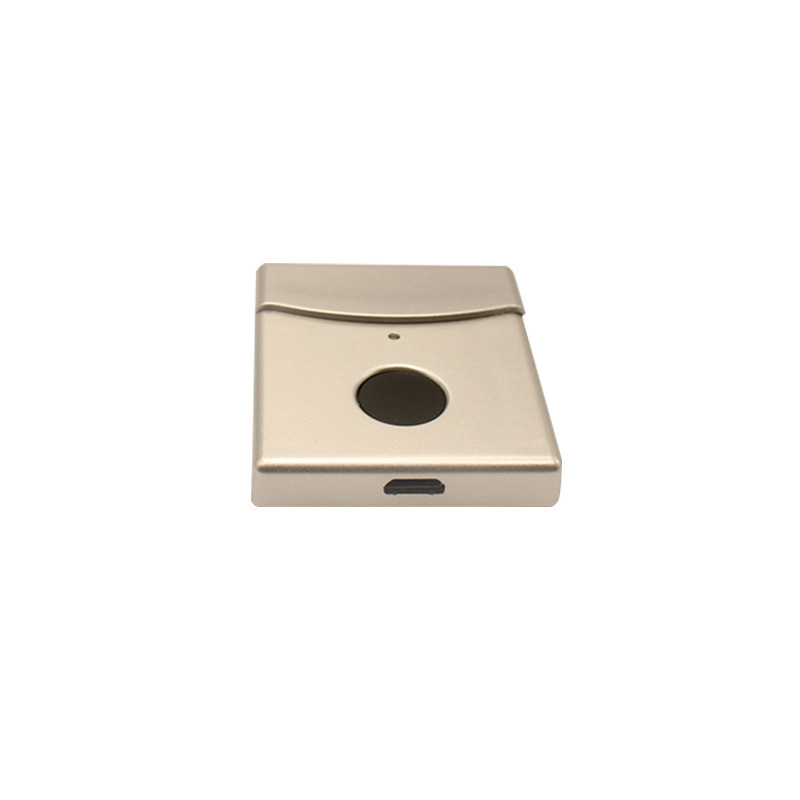Fingerprint driver module: the core of optimizing biometric technology
2023-08-30 15:17
With the continuous advancement of science and technology, biometrics is gradually becoming an important part of information security. Among them, fingerprint recognition technology has been widely used in various scenarios due to its unique advantages, such as universality and stability. However, the key to achieving accurate fingerprint recognition is to optimize the fingerprint driver module. This article will explore optimization methods for fingerprint driver modules to improve the performance of biometric technology.

I. Overview of
fingerprint driver module
Fingerprint driver module is a hardware device used to collect and process fingerprint information. It typically includes a fingerprint sensor, signal processing circuitry, and a data transmission interface. The fingerprint sensor is responsible for capturing the fingerprint image, and the signal processing circuit preprocesses and extracts the image to send the fingerprint data to the upper-layer application through the data transmission interface.
Second, the fingerprint driver module optimization method In
order to improve the efficiency and accuracy of fingerprint recognition, the optimization of the fingerprint driver module can be carried out from the following aspects: Optimize the fingerprint sensor:
improve the resolution and collection speed of the sensor to obtain clearer and more complete fingerprint information. In addition, the use of multi-sensor fusion technology can reduce the recognition failure rate due to the failure of a single sensor.
Improved signal processing algorithm: Improve the accuracy and reliability of fingerprint data by optimizing the preprocessing and feature extraction algorithms of fingerprint images. For example, advanced denoising techniques and methods to enhance contrast can improve the quality of fingerprint images.
Introduction of artificial intelligence technology: The use of artificial intelligence technologies such as deep learning and neural networks can improve the accuracy of fingerprint recognition. By training a large number of fingerprint datasets, the model can automatically extract effective features and classify them, reducing false and false recognition rates.
Optimize hardware design: Improve the performance and stability of the fingerprint driver module by optimizing its hardware. For example, faster processors, larger memory, and more efficient power management systems can increase the processing speed and endurance of modules.
Strengthen security protection: Strengthen the security protection of fingerprint data in view of possible security risks. For example, encryption is used to protect data transmission and stored processes from data leakage and tampering.
Third, fingerprint driver module optimization practice
The
following are examples of practices for the above optimization methods: Optimize fingerprint sensors:
The use of high-resolution, high-speed sensors, such as optical sensors or ultrasonic sensors, can improve the clarity and integrity of fingerprint information. In addition, by arranging multiple sensors into an array, simultaneous acquisition of multiple fingers is possible, improving acquisition efficiency.
Improved signal processing algorithms: Advanced image processing algorithms, such as wavelet transform or non-local averaging, are used to denoise fingerprint images and enhance contrast. This helps to improve the quality of fingerprint images and reduce false and missed recognition rates.
Introduction of artificial intelligence technology: use deep learning technology to automatically classify and extract features of fingerprint images. By training deep learning models, you can optimize for different scenarios and groups of people to improve recognition accuracy.
Optimized hardware design: High-performance processor and larger memory to increase the processing speed of fingerprint drive modules. At the same time, optimize the power management system to reduce power consumption and improve battery life.
Strengthen security protection: Symmetric encryption or public key encryption technology is used to encrypt and protect fingerprint data. In addition, security policies and patches are regularly updated to address potential security risks.
In short, the optimization of fingerprint driver module is of great significance to improve the performance of biometric technology. By improving hardware design, optimizing algorithms, and introducing artificial intelligence technology, the accuracy and efficiency of fingerprint recognition can be significantly improved. As technology continues to evolve, we look forward to seeing more innovative optimization methods to drive the widespread adoption of biometrics in more areas.
Related News
Contact Us
Telephone:86-0755-84264858
Mobile:13823613867 13418804292
Fax: 0755-84263124
Address: No. 22-1 Youganyuan Road, Anliang Community, Yuanshan Street, Longgang District, Shenzhen






